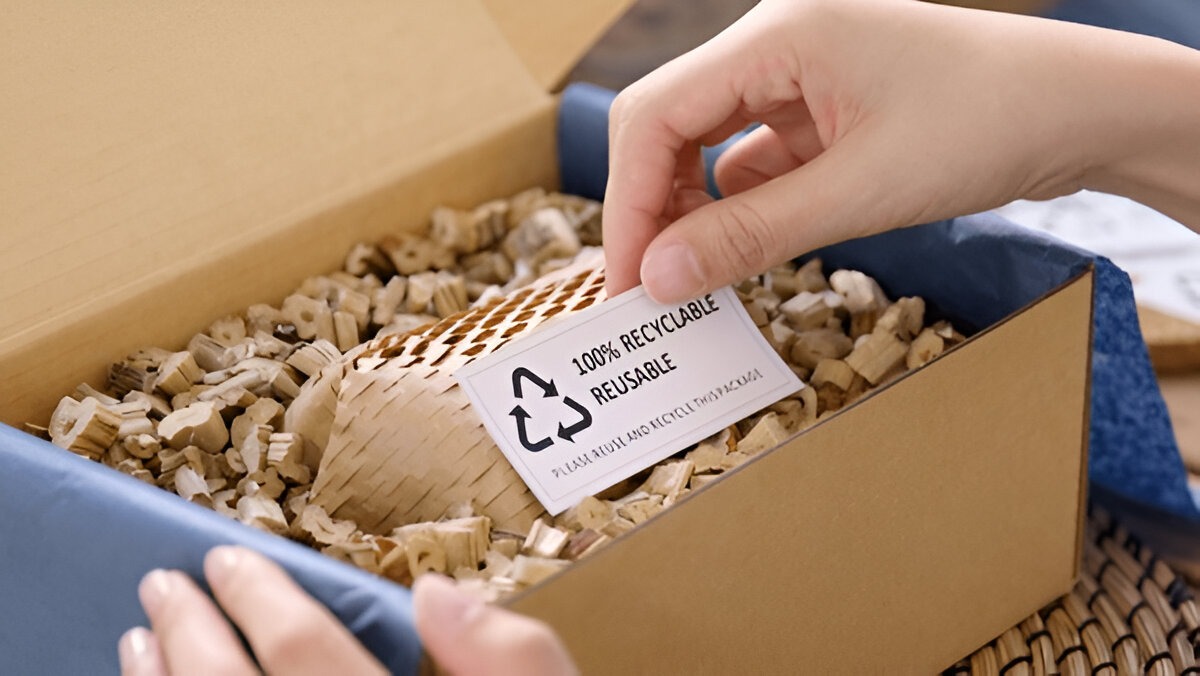Sustainability in eCommerce: How Brands are Meeting Green Consumer Expectations
- Jan 24, 2025

In recent years, sustainability has evolved from a buzzword to a core expectation among consumers. With the rise of eCommerce, this shift has created new challenges and opportunities for businesses to integrate eco-friendly practices into their operations. As more environmentally conscious shoppers demand transparency and responsibility, brands are reimagining their strategies to meet these expectations. Here’s how eCommerce brands are aligning with the green consumer movement:
1. Sustainable Packaging
Packaging waste is a significant concern for online retailers. To reduce their environmental impact, many eCommerce brands are opting for:
- Biodegradable Materials: Using compostable or plant-based packaging materials that break down naturally.
- Minimalist Packaging: Reducing unnecessary layers to cut waste.
- Reusable Solutions: Offering packaging that customers can reuse or return.
For example, companies like Patagonia and Loop have adopted reusable shipping containers to minimize waste.
2. Green Logistics
The delivery process is another critical area where brands can adopt sustainable practices. Innovations in this sector include:
- Carbon-Neutral Shipping: Offsetting emissions by investing in renewable energy projects or reforestation.
- Eco-Friendly Delivery Vehicles: Using electric or hybrid vehicles for last-mile delivery.
- Consolidated Shipping: Encouraging customers to group orders to reduce the frequency of deliveries.
Brands like DHL and Amazon are investing in electric delivery fleets and sustainable logistics hubs to address these concerns.
3. Eco-Friendly Product Lines
Many consumers prioritize products that are sustainably sourced or made from recycled materials. Brands are responding by:
- Highlighting Certifications: Showcasing labels like Fair Trade, FSC, or Organic certifications.
- Circular Economy Initiatives: Launching programs that encourage recycling, upcycling, or refurbishing products.
- Transparency in Sourcing: Providing detailed information about material origins and manufacturing processes.
Take Allbirds, for instance, which emphasizes its use of natural and renewable materials like wool and sugarcane in its footwear.
4. Energy-Efficient Operations
Running an eCommerce platform requires significant energy for data centers, warehouses, and other infrastructure. To reduce their carbon footprint, companies are:
- Switching to Renewable Energy: Powering warehouses and offices with solar or wind energy.
- Optimizing Data Centers: Using energy-efficient servers and reducing redundant processes.
- Smart Warehousing: Incorporating AI and IoT to optimize storage and reduce energy consumption.
Google’s data centers, for example, run on 100% renewable energy, setting a benchmark for sustainability in tech and eCommerce.
5. Empowering Conscious Consumers
Brands are also helping customers make more sustainable choices by:
- Eco-Friendly Filters: Allowing users to sort products based on sustainability attributes.
- Detailed Product Information: Sharing lifecycle analyses or carbon footprints.
- Take-Back Programs: Offering customers the ability to return used items for proper recycling or disposal.
IKEA’s buy-back program, where customers can sell back used furniture for resale, is a prime example of this approach.
6. Corporate Social Responsibility (CSR)
Beyond operational changes, brands are investing in broader initiatives to address environmental challenges, such as:
- Community Projects: Supporting reforestation, clean water initiatives, or wildlife conservation.
- Charity Partnerships: Collaborating with environmental organizations to amplify impact.
- Employee Engagement: Encouraging employees to participate in green initiatives.
Patagonia’s 1% for the Planet initiative, where it donates 1% of its sales to environmental causes, exemplifies strong CSR commitment.
7. Challenges and Future Outlook
While the push for sustainability is promising, brands face challenges such as higher costs, supply chain complexities, and consumer education. However, as technology advances and consumer awareness grows, these barriers are likely to diminish.
The future of sustainable eCommerce lies in innovation. From blockchain for supply chain transparency to AI-driven waste reduction, technology will play a pivotal role in driving eco-friendly practices. Moreover, collaboration among businesses, governments, and consumers is essential to create a truly sustainable ecosystem.
Sustainability in eCommerce is no longer optional. As green consumer expectations rise, brands that prioritize eco-friendly practices gain a competitive edge while contributing positively to the planet. At Pluugin, we recognize the importance of sustainable eCommerce and are committed to fostering responsible shopping experiences. From exclusive deals on eco-friendly products to ensuring our operations align with environmentally conscious practices, Pluugin is paving the way for a greener future in online retail. The time to act is now, and together, we can create lasting value for customers, the planet, and generations to come.
You May Also like This
Popular Posts
-
 The Future of Fulfillment: Micro-Warehouses and Hyperlocal Delivery
The Future of Fulfillment: Micro-Warehouses and Hyperlocal Delivery -
 How to Reduce Shipping Costs Without Sacrificing Speed: A Strategic Approach
How to Reduce Shipping Costs Without Sacrificing Speed: A Strategic Approach -
 Emotion AI in eCommerce: Reading Customer Sentiments to Enhance Experiences
Emotion AI in eCommerce: Reading Customer Sentiments to Enhance Experiences -
 AI-Powered Pricing Strategies: Staying Competitive in the eCommerce Marketplace
AI-Powered Pricing Strategies: Staying Competitive in the eCommerce Marketplace -
 Subscription Models: Why eCommerce Brands Are Betting on Recurring Revenue
Subscription Models: Why eCommerce Brands Are Betting on Recurring Revenue







